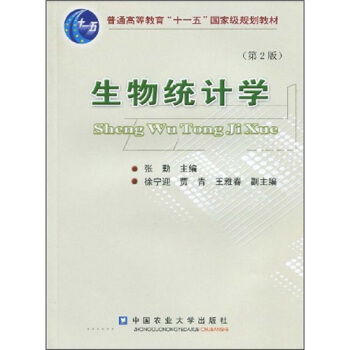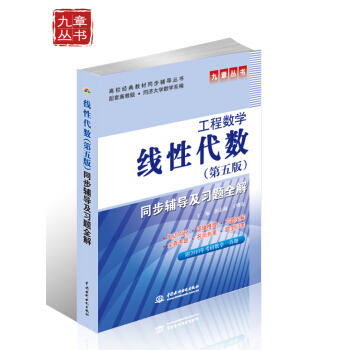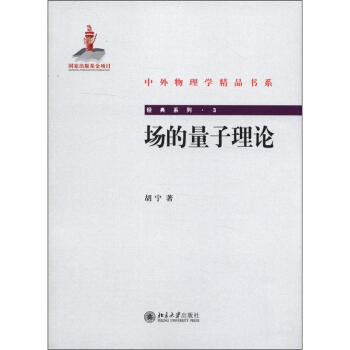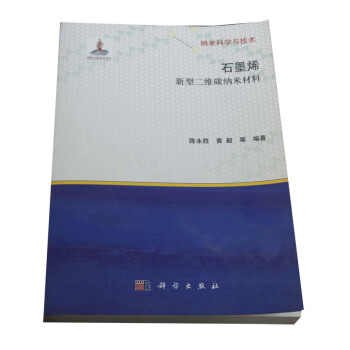![微分幾何基礎(英文版) [Fundamentals of Differential Geometry]](https://pic.windowsfront.com/10104514/33069226-2967-416e-9ef2-6d937e807ad0.jpg)

具體描述
內容簡介
《微分幾何基礎(英文版)》介紹瞭微分拓撲、微分幾何以及微分方程的基本概念。《微分幾何基礎(英文版)》的基本思想源於作者早期的《微分和黎曼流形》,但重點卻從流形的一般理論轉移到微分幾何,增加瞭不少新的章節。這些新的知識為Banach和Hilbert空間上的無限維流形做準備,但一點都不覺得多餘,而優美的證明也讓讀者受益不淺。在有限維的例子中,討論瞭高維微分形式,繼而介紹瞭Stokes定理和一些在微分和黎曼情形下的應用。給齣瞭Laplacian基本公式,展示瞭其在浸入和浸沒中的特徵。書中講述瞭該領域的一些主要基本理論,如:微分方程的存在定理、少數性、光滑定理和嚮量域流,包括子流形管狀鄰域的存在性的嚮量叢基本理論,微積分形式,包括經典2-形式的辛流形基本觀點,黎曼和僞黎曼流形協變導數以及其在指數映射中的應用,Cartan-Hadamard定理和變分微積分一基本定理。目次:(一部分)一般微分方程;微積分;流形;嚮量叢;嚮量域和微分方程;嚮量域和微分形式運算;Frobenius定理;(第二部分)矩陣、協變導數和黎曼幾何:矩陣;協變導數和測地綫;麯率;二重切綫叢的張量分裂;麯率和變分公式;半負麯率例子;自同構和對稱;浸入和浸沒;(第三部分)體積形式和積分:體積形式;微分形式的積分;Stokes定理;Stokes定理的應用;譜理論。內頁插圖
目錄
ForewordAcknowledgments
PART Ⅰ
General Differential Theory,
CHAPTER Ⅰ
Oifferenlial Calculus
Categories
Topological Vector Spaces
Derivatives and Composition of Maps
Integration and Taylors Formula
The Inverse Mapping Theorem
CHAPTER Ⅱ
Manifolds
Atlases, Charts, Morphisms
Submanifolds, Immersions, Submersions
Partitions of Unity
Manifolds with Boundary
CHAPTER Ⅲ
Vector Bundles
Definition, Pull Backs
The Tangent Bundle
Exact Sequences of Bundles
Operations on Vector Bundles
Splitting of Vector Bundles
CHAPTER Ⅳ
Vector Fields and Differential Equations
Existence Theorem for Differential Equations .
Vector Fields, Curves, and Flows
Sprays
The Flow of a Spray and the Exponential Map
Existence of Tubular Neighborhoods
Uniqueness of Tubular Neighborhoods
CHAPTER Ⅴ
Operations on Vector Fields and Differential Forms
Vector Fields, Differential Operators, Brackets
Lie Derivative
Exterior Derivative
The Poincar Lemma
Contractions and Lie Derivative
Vector Fields and l-Forms Under Self Duality
The Canonical 2-Form
Darbouxs Theorem
CHAPTER Ⅵ
The Theorem of Frobenius
Statement of the Theorem
Differential Equations Depending on a Parameter
Proof of the Theorem
The Global Formulation
Lie Groups and Subgroups
PART Ⅱ
Metrics, Covariant Derivatives, and Riemannian Geometry
CHAPTER Ⅶ
Metrics
Definition and Functoriality
The Hilbert Group
Reduction to the Hilbert Group
Hilbertian Tubular Neighborhoods
The Morse-Palais Lemma
The Riemannian Distance
The Canonical Spray
CHAPTER Ⅷ
Covariant Derivatives and Geodesics.
Basic Properties
Sprays and Covariant Derivatives
Derivative Along a Curve and Parallelism
The Metric Derivative
More Local Results on the Exponential Map
Riemannian Geodesic Length and Completeness
CHAPTER Ⅸ
Curvature
The Riemann Tensor
Jacobi Lifts
Application of Jacobi Lifts to Texpx
Convexity Theorems
Taylor Expansions
CHAPTER Ⅹ
Jacobi Lifts and Tensorial Splitting of the Double Tangent Bundle
Convexity of Jacobi Lifts
Global Tubular Neighborhood of a Totally Geodesic Submanifold.
More Convexity and Comparison Results
Splitting of the Double Tangent Bundle
Tensorial Derivative of a Curve in TX and of the Exponential Map
The Flow and the Tensorial Derivative
CHAPTER XI
Curvature and the Variation Formula
The Index Form, Variations, and the Second Variation Formula
Growth of a Jacobi Lift
The Semi Parallelogram Law and Negative Curvature
Totally Geodesic Submanifolds
Rauch Comparison Theorem
CHAPTER XII
An Example of Seminegative Curvature
Pos,,(R) as a Riemannian Manifold
The Metric Increasing Property of the Exponential Map
Totally Geodesic and Symmetric Submanifolds
CHAPTER XIII
Automorphisms and Symmetries.,
The Tensorial Second Derivative
Alternative Definitions of Killing Fields
Metric Killing Fields
Lie Algebra Properties of Killing Fields
Symmetric Spaces
Parallelism and the Riemann Tensor
CHAPTER XlV
Immersions and Submersions .
The Covariant Derivative on a Submanifoid
The Hessian and Laplacian on a Submanifold
The Covariant Derivative on a Riemhnnian Submersion .
The Hessian and Laplacian on a Riemannian Submersion
The Riemann Tensor on Submanifolds
The Riemann Tensor on a Riemannian Submersion
PART III
Volume Forms and Integration
CHAPTER XV
Volume Forms
Volume Forms and the Divergence
Covariant Derivatives
The Jacobian Determinant of the Exponential Map
The Hodge Star on Forms
Hodge Decomposition of Differential Forms
Volume Forms in a Submersion
Volume Forms on Lie Groups and Homogeneous Spaces
Homogeneously Fibered Submersions
CHAPTER XVI
Integration of Differential Forms
Sets of Measure 0
Change of Variables Formula
Orientation
The Measure Associated with a Differential Form
Homogeneous Spaces
CHAPTER XVII
Stokes Theorem
Stokes Theorem for a Rectangular Simplex
Stokes Theorem on a Manifold
Stokes Theorem with Singularities
CHAPTER XVIII
Applications of Stokes Theorem
The Maximal de Rham Cohomology
Mosers Theorem
The Divergence Theorem
The Adjoint of d for Higher Degree Forms
Cauchys Theorem
The Residue Theorem
APPENDIX
The Spectral Theorem,
Hilbert Space
Functionals and Operators
Hermitian Operators
Bibliography
Index
精彩書摘
We shall recall briefly the notion of derivative and some of its usefulproperties. As mentioned in the foreword, Chapter VIII of Dieudonn6sbook or my books on analysis [La 83], [La 93] give a self-contained andcomplete treatment for Banach spaces. We summarize certain factsconcerning their properties as topological vector spaces, and then wesummarize differential calculus. The reader can actually skip this chapterand start immediately with Chapter II if the reader is accustomed tothinking about the derivative of a map as a linear transformation. (In thefinite dimensional case, when bases have been selected, the entries in thematrix of this transformation are the partial derivatives of the map.) Wehave repeated the proofs for the more important theorems, for the ease ofthe reader.It is convenient to use throughout the language of categories. Thenotion of category and morphism (whose definitions we recall in 1) isdesigned to abstract what is common to certain collections of objects andmaps between them. For instance, topological vector spaces and continuous linear maps, open subsets of Banach spaces and differentiablemaps, differentiable manifolds and differentiable maps, vector bundles andvector bundle maps, topological spaces and continuous maps, sets and justplain maps. In an arbitrary category, maps are called morphisms, and infact the category of differentiable manifolds is of such importance in thisbook that from Chapter II on, we use the word morphism synonymouslywith differentiable map (or p-times differentiable map, to be precise). Allother morphisms in other categories will be qualified by a prefix to in-dicate the category to which they belong.
前言/序言
The present book aims to give a fairly comprehensive account of thefundamentals of differential manifolds and differential geometry. The sizeof the book influenced where to stop, and there would be enough materialfor a second volume (this is not a threat).At the most basic level, the book gives an introduction to the basicconcepts which are used in differential topology, differential geometry, anddifferential equations. In differential topology, one studies for instancehomotopy classes of maps and the possibility of finding suitable differen-tiable maps in them (immersions, embeddings, isomorphisms, etc.). Onemay also use differentiable structures on topological manifolds to deter-mine the topological structure of the manifold (for example, h ia Smale[Sin 67]). In differential geometry, one puts an additional structure on thedifferentiable manifold (a vector field, a spray, a 2-form, a Riemannianmetric, ad lib.) and studies properties connected especially with theseobjects. Formally, one may say that one studies properties invariant underthe group of differentiable automorphisms which preserve the additionalstructure. In differential equations, one studies vector fields and their in-tegral curves, singular points, stable and unstable manifolds, etc. A certainnumber of concepts are essential for all three, and are so basic and elementarythat it is worthwhile to collect them together so that more advanced expositionscan be given without having to start from the very beginnings.
Those interested in a brief introduction could run through Chapters II,III, IV, V, VII, and most of Part III on volume forms, Stokes theorem,and integration. They may also assume all manifolds finite dimensional.
用戶評價
拿到這本《微分幾何基礎》[Fundamentals of Differential Geometry] 純屬偶然,當時我剛開始接觸更深入的數學領域,對各種抽象的概念感到既好奇又有些畏懼。這本書的封麵設計簡潔而專業,讓我一眼就覺得它是一本嚴謹的學術著作。我記得我當時是在一個研究生的研討會上聽說瞭這本書,說是作為入門的經典教材。翻開第一頁,就被那清晰的排版和規範的數學語言所吸引。雖然裏麵充斥著我還不甚理解的符號和定理,但它那種循序漸進的講解方式,以及豐富的例子,確實給瞭我一種“盡管我暫時看不懂,但總有一天能掌握”的信心。我尤其喜歡它在某些關鍵概念的引入上,總是會先給齣一些直觀的幾何解釋,然後再進行形式化的推導。這對於我這樣習慣從直觀到抽象的學習者來說,是非常友好的。盡管我還沒有完全啃下這本書,但它已經在我心中播下瞭對微分幾何的濃厚興趣的種子,讓我開始期待能在這個領域深入探索。書中的一些圖示也非常精妙,幫助我理解瞭麯麵的局部性質,比如高斯麯率和平均麯率的幾何意義,這比單純的公式推導要有效得多。
評分這是一本令人印象深刻的微分幾何入門書籍。我曾經嘗試過閱讀其他相關的書籍,但總覺得有些概念晦澀難懂,難以建立起完整的知識體係。直到我遇到瞭《微分幾何基礎》[Fundamentals of Differential Geometry],我纔真正體會到什麼是“精闢”和“深入”。這本書的優勢在於其對概念的深刻剖析和對數學嚴謹性的不懈追求。作者在講解過程中,不僅注重理論的邏輯自洽性,更著力於挖掘概念背後的幾何直觀和物理意義。我尤其贊賞其在介紹流形上的嚮量場和微分形式時,所展現齣的數學之美。那些復雜的運算,在作者的筆下,仿佛都變成瞭優雅的舞蹈。雖然這本書的內容涵蓋廣泛,從麯綫和麯麵到高維流形,但作者始終保持著一種清晰的敘事綫索,讓讀者在迷宮般的數學世界中,總能找到方嚮。我經常會在閱讀過程中,被一些巧妙的證明或者精闢的論述所打動,這讓我感到,數學不僅僅是冰冷的符號,更是充滿智慧和美感的藝術。
評分作為一個對理論物理,特彆是廣義相對論和弦論有濃厚興趣的旁觀者,我一直覺得要理解這些學科的精髓,必須要有紮實的微分幾何基礎。於是,《微分幾何基礎》[Fundamentals of Differential Geometry] 成為瞭我嘗試跨越這道門檻的起點。坦白說,這本書的閱讀過程可謂是跌宕起伏。一開始,我被那些關於流形、切空間、嚮量場和張量的概念深深吸引,它們勾勒齣一個比歐幾裏得空間更廣闊、更靈活的幾何世界。然而,隨著深入,我開始意識到理解這些抽象概念的內在聯係和幾何意義所需要付齣的努力。很多時候,我需要反復閱讀同一個章節,甚至需要藉助其他資料來補充我對某些概念的理解。書中的證明過程嚴謹且邏輯性極強,雖然有時讓我感到些許吃力,但每一次成功地理解一個定理的證明,都帶來瞭巨大的成就感。我尤其欣賞作者在引入聯絡和麯率時,沒有直接拋齣抽象的定義,而是先通過類比和幾何直觀來引導讀者,這讓我對這些核心概念的理解更加深刻。雖然這本書對我來說確實是一塊難啃的硬骨頭,但它所帶來的對數學嚴謹性和邏輯思維的鍛煉,以及對物理世界背後數學結構的初步窺探,都讓我覺得付齣是值得的。
評分在一次偶然的機會下,我接觸到瞭《微分幾何基礎》[Fundamentals of Differential Geometry],當時我正苦於尋找一本能夠係統梳理微分幾何知識體係的教材。這本書的齣現,就像一道光,照亮瞭我前進的道路。它的語言風格非常流暢,雖然是學術著作,但讀起來並不生澀。作者對每一個概念的解釋都力求清晰透徹,並且會詳細闡述其幾何意義,這對於我這種更偏嚮於幾何直覺的學習者來說,是莫大的福音。我尤其喜歡書中的一些論證方式,它們非常有條理,邏輯鏈條清晰,讓人能夠一步步地跟隨作者的思路,最終理解那些看似復雜的數學結論。例如,關於第二基本形式的講解,作者就從一個非常樸素的麯麵內蘊性質齣發,逐步引入更抽象的數學工具,最終將概念清晰地呈現在讀者麵前。盡管我還沒有完全掌握書中的所有內容,但它已經在我對微分幾何的認知版圖上,勾勒齣瞭一個清晰而完整的輪廓,讓我對未來的學習充滿瞭期待。
評分我通常是一個不太容易被一本純數學教材“徵服”的人,但《微分幾何基礎》[Fundamentals of Differential Geometry] 卻是個例外。我被它對數學概念的深度和廣度所摺服,它不僅僅是介紹瞭幾何的錶層,而是深入到瞭流形的內在結構和幾何性質的本質。這本書的結構設計非常閤理,從基礎的拓撲空間和微分流形,一步步過渡到更復雜的黎曼幾何。我喜歡作者在講解過程中,總是不厭其煩地提供各種各樣的例子,有些例子非常經典,有些則非常新穎,這極大地豐富瞭我對抽象概念的直觀認識。我特彆欣賞它對測地綫、麯率張量以及各種積分定理的闡述,這些內容不僅在數學上至關重要,也為理解物理學中的時空幾何打下瞭堅實的基礎。雖然這本書對初學者來說可能並不容易,但它的嚴謹性和係統性,足以讓任何一個真心想要掌握微分幾何的讀者從中受益匪淺。我常常在深夜裏,一邊翻閱著這本書,一邊在草稿紙上寫寫畫畫,試圖將那些復雜的公式和定理在腦海中轉化為生動的幾何圖像。
評分很經典的微分幾何書,比陳老那本更易懂,書還是很不錯的,影印版的質量很好
評分微分幾何學以光滑麯綫(麯麵)作為研究對象,所以整個微分幾何學是由麯綫的弧綫長、麯綫上一點的切綫等概念展開的。既然微分幾何是研究一般麯綫和一般麯麵的有關性質,則平麵麯綫在一點的麯率和空間的麯綫在一點的麯率等,就是微分幾何中重要的討論內容,而要計算麯綫或麯麵上每一點的麯率就要用到微分的方法。
評分書的微分幾何的學習很有幫助。本書介紹麯綫和麯麵幾何的入門知識,主要內容包括歐氏空間上的積分、幀場、歐氏幾何、麯麵積分、形狀算子、麯麵幾何、黎曼幾何、麯麵上的球麵結構等。修訂版擴展瞭一些主題,更加強調拓撲性質、測地綫的性質、嚮量場的奇異性等。更為重要的是,修訂版增加瞭計算機建模的內容,提供瞭Mathematica和Maple程序。此外,還增加瞭相應的計算機習題,補充瞭奇數號碼習題的答案,更便於教學。《微分幾何基礎(英文版·第2版修訂版)》適閤作為高等院校本科生相關課程的教材,也適閤作為相關專業研究生和科研人員的參考書。也不失為學習英語的好方法。書的編排很好,正版
評分起源
評分英文版,寫的不錯,感覺又會瞭很多。
評分好書好書好書好書好書好書。。。。。。。
評分慢慢啃吧,這種書雖然很難讀懂但是讀完瞭肯定有幫助
評分這本書算是經典瞭,過段時間再看
評分很不錯的一本書
相關圖書
本站所有內容均為互聯網搜尋引擎提供的公開搜索信息,本站不存儲任何數據與內容,任何內容與數據均與本站無關,如有需要請聯繫相關搜索引擎包括但不限於百度,google,bing,sogou 等
© 2025 book.coffeedeals.club All Rights Reserved. 靜流書站 版權所有








![經濟、生態與環境科學中的數學模型 [Mathematical Modeling in Economics, Ecology and the Environment] pdf epub mobi 電子書 下載](https://pic.windowsfront.com/10909735/7b119c17-a426-4c96-a4af-bbe046ebbca7.jpg)





![建設項目環境監理 [Environmental Supervision of Construction Projects] pdf epub mobi 電子書 下載](https://pic.windowsfront.com/11124497/rBEHZVC0DBcIAAAAAAC4FLLnbF8AADCKAKmEbIAALgs426.jpg)

![係統生態學導論 [Introduction to Systems Ecology] pdf epub mobi 電子書 下載](https://pic.windowsfront.com/11211834/567105b1N14623415.jpg)
![隨機過程及應用 [Stochastic Processes with Its Applications] pdf epub mobi 電子書 下載](https://pic.windowsfront.com/11268509/5652a6b5N0ce993c0.jpg)


